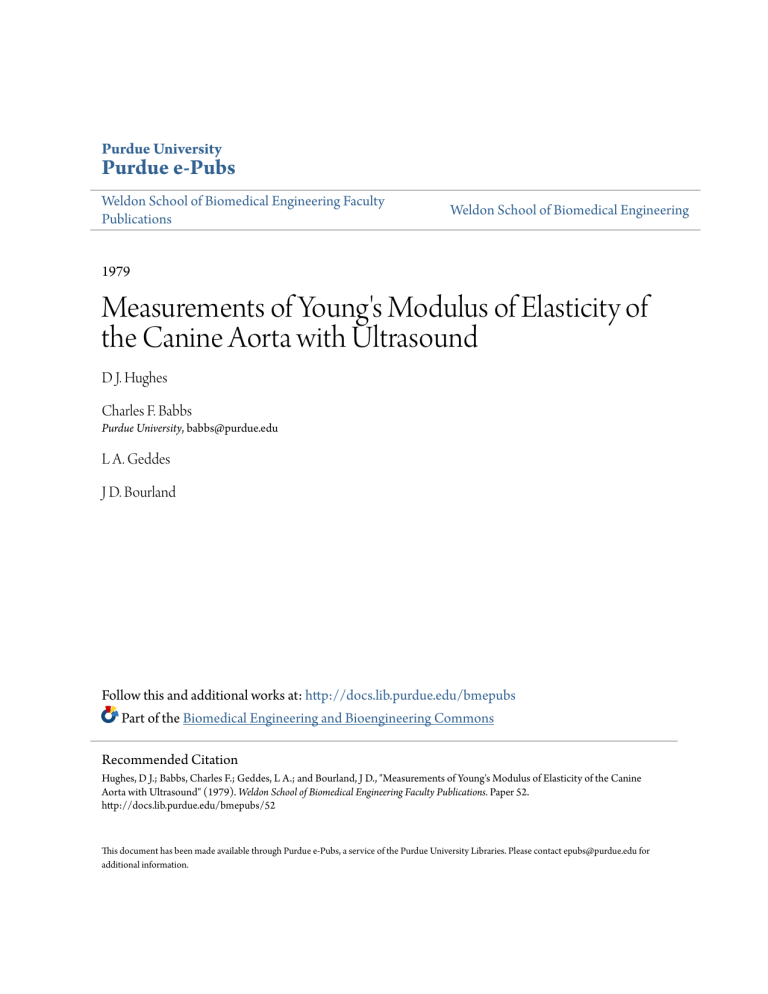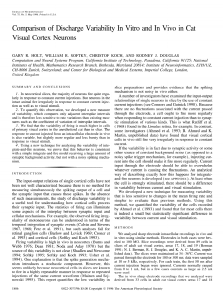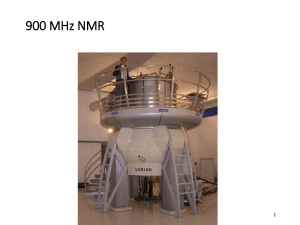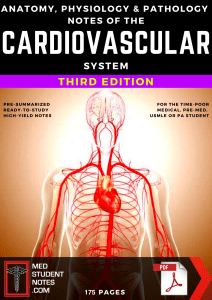
Purdue University
Purdue e-Pubs
Weldon School of Biomedical Engineering Faculty
Publications
Weldon School of Biomedical Engineering
1979
Measurements of Young's Modulus of Elasticity of
the Canine Aorta with Ultrasound
D J. Hughes
Charles F. Babbs
Purdue University, [email protected]
L A. Geddes
J D. Bourland
Follow this and additional works at: http://docs.lib.purdue.edu/bmepubs
Part of the Biomedical Engineering and Bioengineering Commons
Recommended Citation
Hughes, D J.; Babbs, Charles F.; Geddes, L A.; and Bourland, J D., "Measurements of Young's Modulus of Elasticity of the Canine
Aorta with Ultrasound" (1979). Weldon School of Biomedical Engineering Faculty Publications. Paper 52.
http://docs.lib.purdue.edu/bmepubs/52
This document has been made available through Purdue e-Pubs, a service of the Purdue University Libraries. Please contact [email protected] for
additional information.
ULTRASONIC IMAGING 1, 356-367 (1979)
MEASUREMENTS OF YOUNG'S MODULUS OF
ELASTICITY OF THE CANINE AORTA WITH
ULTRASOUND
D.J. Hughes, C.F. Babbs, L.A. Geddes, and J.D. Bourland
Biomedical Engineering Center
Purdue University
West Lafayette, Indiana, USA.
Abstract
We have developed an ultrasonic technique for determining the dynamic Young's modulus of
elasticity (E) of the canine aorta in vivo. Young's modulus was measured in the descending
thoracic aorta (DTA) and the abdominal aorta (AA) of 12 dogs over a range of mean blood
pressures from 40-200 mmHg. The vessels were excised and dynamic moduli were determined
in vitro postmortem from pressure-volume curves. The data so obtained were compared to the in
vivo values. In vivo and in vitro moduli increased exponentially with mean distending pressure
(P). The equation of best fit for these data was of the form E= E0 exp(aP). Constants E0 and a
depended on the site of measurement (AA or DTA) and upon the particular animal. In vivo and
in vitro moduli were not significantly different in the AA (AA: in vivo E0 = 667 ± 382 mmHg, a
= 0.017 ± 0.004 mmHg-1; in vitro E0 = 888 ± 367, a= 0.016 ± 0.002). However, in vivo moduli
exceeded in vitro moduli in the DTA. (DTA: in vivo E0 = 687 ± 241, a = 0.016 ± 0.004; in vitro
E0 = 349 ± 64, a= 0.018 ± 0.003). The increased stiffness of the DTA compared to the AA in
vivo may be due to the in situ tethering of the aorta to the spine by the parietal pleura.
Key words: Arterial compliance; arterial elasticity; pulse wave velocity
This work was supported by grant #APR-75-1Al89, National Science Foundation, Washington,
D.C., USA.
1
Introduction
The normal mechanical function of the aorta is storage of part of the systolic outflow of the heart
as elastic energy in the aortic wall, which is released to provide flow during diastole. However,
stiffening of arteries occurs with age and may be associated with symptomatic and life
threatening cardiovascular disease. An increase in aortic stiffness increases the work load of the
heart.
The fundamental elastic property of the aortic wall is Young's modulus of elasticity. Young's
modulus is an inherent property of any solid or elastomer, and is defined as the ratio of tensile
stress to tensile strain. Studies of the mechanical/elastic properties of the aorta have been limited
because there have been few methods of measuring the modulus of elasticity of the aorta in vivo.
Studies of excised vessels are of limited validity. This paper describes a new ultrasonic method
for the in vivo measurement of Young's modulus in the intact, living dog and compares in vivo
measurements with in vitro values determined immediately postmortem in these same aortic
segments. By comparing the in vivo and in vitro values, differences between aortic elasticity in
the living animal and in excised vessels can be discerned.
Methods and materials
In the present study, the in vivo Young's modulus of elasticity (E) was calculated from the aortic
pulse wave velocity (Vp), the diameter (d), thickness (t) of the aorta, and the density of blood ().
The mathematical relationship describing these quantities is the Moens-Korteweg equation [1],
Vp
Et
.
d
(1)
Aortic diameter and thickness were measured with a triaxial ultrasound catheter. The density of
blood was determined from the hematocrit [3]. The pulse wave velocity was measured in the
aorta by determining the difference in pressure pulse arrival time with a catheter-tip pressure
transducer at two sites a known distance apart. Due to the small relative diameters of the
catheters with respect to the diameter of the aorta, the presence of the catheters in the vessel was
not expected to modify blood flow. Using this technique, we determined the modulus of
elasticity in the thoracic and abdominal aortae of 12 mongrel dogs. In 8 of the 12 animals,
Young's modulus was measured in segments of both the thoracic and abdominal aortae. In each
of the 12 dogs, after the in vivo measurements were completed, the aortae were excised and
moduli were determined in vitro by a pressure-volume technique.
2
a. In vivo measurements
Twelve dogs anesthetized with sodium pentobarbital (30 mg/kg i.v.) served as subjects. In each
animal, measurements of aortic pulse wave velocity and aortic diameter and thickness were made
over a wide range of mean aortic blood pressure (40-200 mmHg). Blood pressure was elevated
by intravenous injections of phenylephrine hydrochloride (0.1 mg/kg), a short-acting peripheral
vasoconstrictor. Blood pressure was lowered by intravenous doses of sodium nitroprusside (0.1
mg/kg), a short acting peripheral vasodilator. Atropine sulfate (1 mg, i.v.) was given prior to
phenylephrine, and propranolol hydrochloride (1 mg, i.v.) was given prior to nitroprusside to
blunt the action of autonomic reflexes.
A specially designed ultrasonic catheter (developed with the Indianapolis Center for Advanced
Research, Indianapolis, Indiana) was employed to measure aortic diameter and thickness. This
catheter contained three piezoelectric elements spaced equiangularly (120 degrees) around the
catheter tip in a plane perpendicular to its long axis. The catheter (7 French) was 60 cm long. The
piezoelements were excited by a Panametrics (Waltham, Massachusetts) 5050PR pulser, which
also provided preamplification for the echo signals received from the aortic walls. A specially
designed electronic commutator was used to excite each piezoelectric element sequentially and
display the echo patterns on a high-frequency oscilloscope. A pulse repetition frequency of 1
kHz was employed. This ultrasonic catheter system has been described in detail [2]. Figure 1
diagrams the experimental apparatus for the in vivo measurements. Echo patterns on the
oscilloscope were recorded on videotape for later analysis. The videotape recordings allowed
determination of aortic pressures and radii every 33 ms [2].
Figure 1. Diagram of the experimental apparatus for the in vivo measurements.
3
To determine aortic dimensions in vivo, the triaxial ultrasonic catheter was advanced down the
right carotid artery into the desired position in the aorta. In eight of the twelve animals,
measurements were made at two sites, one in the descending thoracic aorta (DTA) distal to the
aortic arch at the mid-thoracic level, and the other in the infrarenal abdominal aorta (AA).
Figure 2 illustrates the technique of measuring aortic diameter from ultrasonic times-of-flight
(tof). Three aortic inner- and outer-wall echoes were displayed on an oscilloscope screen, the
image of which was recorded on video cassette tape for later analysis. By replaying the video
recorded echo signals on a stop-frame video cassette player (Sony V0-2850), ultrasonic times-offlight to and from the inner- and outer- walls of the aorta could be measured. Using previously
determined values for the speed of 10 MHz ultrasound in canine blood [3], and in canine aortic
wall [4], the distances from each piezoelement to the inner- and outer-wall were then computed,
as shown in Figure 2. By applying the polygon law and the law of cosines to an inscribed
triangle whose vertices were the points of intersection of the ultrasonic paths with the circular
vessel walls, the inner- and outer-radii of the aorta were computed. Since only veins collapse to
any significant extent, the assumption of circular aortic section for distending pressures greater
than 40 mmHg should not hinder the application of the polygon toward calculation of vessel
dimensions.
Figure 2. Diagram of catheter location in the aortic lumen, typical A-scan display of
echoes, and the equation relating vessel radius to intravascular distances.
4
To facilitate calculation of mean, systolic and diastolic diameters in the aorta, a blood pressure
channel was displayed by the oscilloscope and recorded on video tape, along with ultrasonic
echoes. Mean inner diameter, Dm, was calculated in a manner analogous to mean blood pressure,
Pm from systolic and diastolic pressures (Ps, Pd) and diameters (Ds, Dd):
Pm Ps KPs Pd
Dm Ds KDs Dd .
(2)
The parameter K was evaluated from strip chart records of blood pressure. The difference
between mean inner- and outer-wall radii was interpreted as the mean wall thickness, t.
The pulse wave velocity is the remaining quantity needed to calculate Young's modulus using
Eq. (1). Pulse wave velocity was measured using differential pulse arrival times at two sites a
known distance apart. The R-wave of the electrocardiogram was used as the reference time. This
method, described by Patel et al. [5], measures the velocity at which the upstroke of the blood
pressure waveform travels. Pulse arrival was detected by strain gage pressure transducer
mounted at the tip of a 120 cm long #5 French catheter placed adjacent to the ultrasound
catheter-tip transducer.
To calculate pulse wave velocity at the site of ultrasonic measurement, the Millar blood pressure
catheter was translated 5 cm cephalad from the tip of the ultrasonic catheter for a few cardiac
cycles and then moved 5 cm caudad. By using the R-wave of the ECG (lead II) as a timing
reference, measuring the difference in pulse arrival times, T, over the 100 mm excursion gave the
values necessary to compute the pulse wave velocity, Vp :
Vp
100 mm
.
T ms
(3)
Initial adjacent location of the two catheter tips was verified by echoes received from the blood
pressure catheter with one of the ultrasound transceivers. Postmortem examination of catheter
positions also confirmed adjacency of the two catheter tips. In theory, blood flow velocity must
be subtracted from the calculated pulse wave velocity to obtain the true pulse wave velocity.
However, since the flow velocity is of the order of 0.25 m/s compared to 5 m/s for the pulse
wave velocity [6], this correction was not made in this study. For calculation of in vivo moduli,
values of the pulse wave velocity at specific mean pressures were taken from parabolic
regression functions fitted to the pulse wave velocity data [ 7].
5
b. In vitro measurements
After the in vivo data were obtained, the animal was sacrificed and specimens of the DTA and
AA were excised for determination of the in vitro modulus of elasticity. The excised specimens
coincided with the points of ultrasonic measurement. Before excision, the in situ length, L , was
determined carefully. The specimens were tethered to this length in a room temperature water
bath for determination of Young's modulus by the pressure-volume method shown in Figure 3.
An infusion pump was used to pressurize the vessel with a continuous infusion of saline loaded
with India ink. The ink particles inhibited leakage from the vasa vasorum. The rate of infusion
was constant at 0.5 cm3/s. Transmural pressure (Pt) was recorded with a strain gauge pressure
transducer. Movement of the infusion pump shaft engaged a linear potentiometer to record the
volume infused. Both transmural pressure and infused volume were recorded on an x-y plotter to
produce a pressure-volume curve.
Careful calculation of the internal volume of the vessel (V0) at zero transmural pressure allowed
determination of vessel volume, V, at any pressure from the infused volume. The vessel wall
thickness at zero transmural pressure, t0 , was measured directly by a special tissue micrometer,
by applying Archimedes Principle and knowing vessel dimensions and by using a magnifying
optical gradicule. In each case, the vessel was tethered to the in situ length. Then wall thickness
for any distending volume was calculated, assuming constant cross sectional area of the vessel
wall (Poisson's ratio = 0.5) from the expression
t (V) t 0
V0
.
V
(4)
Young's modulus was calculated from Eq. (5), as described by Posey [6],
P 2 V 3
E
.
V t L
(5)
In this expression, P/V denotes the slope of the P-V curve, t is wall thickness, V is the internal
volume, and L is the in vivo length of the vessel.
6
Figure 3. Diagram of the apparatus used in the in vitro measurements.
Results
Typical in vivo and in vitro values of Young's modulus are represented by the semi-log plot in
Figure 4. The linear relationship obtained suggested an exponential representation of Young's
modulus, E, in terms of mean distending pressure, P. This relationship was described by the
expression
E E0 exp( a P) .
(6)
7
Figure 4. Young's modulus in vivo and in vitro for the thoracic (a) and abdominal (b)
aortae.
8
From semi-log treatment of these data, the constants E and a were determined for each of the
12 dogs. The mean values, E0 and a , are shown in Table 1, along with the ratio of in vivo to in
vitro results. The correlation coefficients obtained for these exponential fits were in excess of
0.95.
Table 1
Discussion
The Moens-Korteweg equation, Eq. (1), was derived in 1878 from the wave equation for
propagation of a pressure impulse within a thin walled, perfectly elastic, cylindrical tube [1].
Details of the derivation were reviewed by Hardung [8]. Measurement of Young's modulus of
the canine aorta in vivo was made on the basis of this relationship. The moduli so evaluated are
necessarily dynamic, that is, they depend on the frequency of application of the distending force.
In this investigation, the distending frequency was the heart rate which ranged from 2.0 to 2.5 Hz
(120-150/min) due to phenylephrine and nitroprusside. Bergel [9] found that the dynamic
modulus was independent of distending frequency for frequencies greater than 2 Hz and less than
10 Hz.
The in vitro measurements of Young's modulus represent values obtained by tethering the aorta
to its in vivo length. This tethering prevents longitudinal extension of the vessel, a natural
phenomenon in vivo, but the introduction of such end effects is minimized by tethering at the in
vivo length [6].
The moduli evaluated in vitro represent dynamic moduli due to the nature of the distension
achieved by employing the infusion pump. By setting the rate of infusion at about 0.5 cm3/s,
9
(yielding a dPt/dT of about 200 mmHg/s), the rate of distension in vitro was equivalent to the in
vivo rate of distension.
Because Young's modulus of elastomeric materials, such as blood vessels, is known to be strain
dependent, the choice of an independent variable for the in vivo measurements was carefully
considered. The circumferential elasticity of vessels is primarily related to radius rather than
pressure [10]. However, since mean blood pressure and vessel radius are intimately related for
the aorta [11], and because mean blood pressure is directly measurable, mean blood pressure was
used as the independent variable for determining the pressure-dependent terms in the MoensKorteweg equation.
a. Exponential elasticity
Others have described the nonlinear elastic behavior of blood vessels [6, 8, 10, 12-14]. However,
we found the modulus of elasticity to be exponentially dependent upon mean distending pressure
(Figure 4). Our studies indicate that this nonlinear elastic behavior of the aorta, described by Eq.
(6), applies to both in vivo and in vitro situations. Constants E0 and a were the intercept and
slope, respectively, of the line resulting from a semi-log plot of E vs. P. Therefore, the aorta can
be elastically characterized by E0 and a over the range of mean pressure.
A similar dependence of the dynamic modulus upon distension was obtained in vitro by Hardung
[8]. Subjecting his data to a semi-logarithmic representation yields an exponential equation of
best fit:
E 22 105 exp( 2.9 / ) ,
(7)
where / is the initial extension of the of thoracic aorta, being the length of the aortic strip
along the direction of extension. The correlation coefficient obtained was 0.975.
Bergel [15] measured an incremental (or static) Young's modulus in the thoracic aorta of a dog
and found a nonlinear dependence with pressure. We have applied an exponential fit to his data
with a resulting equation of best fit
E = 717 (mmHg) exp(0.016 P).
(8)
The correlation coefficient for this fit was 0.99. Others have compared measurements of the
static and dynamic modulus of the canine aorta in vivo and in vitro [6,16,17]. Table II
summarizes the results reported here and elsewhere. The range of values reported herein
compare well with the results of these studies.
10
Table II. Comparison of values of Young's modulus reported by several investigators (after [19]).
Our technique of measuring aortic diameter and wall thickness, unlike many previous methods,
was conducted without dissection of the connective tissue surrounding the aorta [2]. In studies of
pressure-diameter relationships in dogs, other investigators disturbed the intact vascular
geometry to enable implantation of transducers for aortic diameter measurement [1, 2, 7].
b. In vivo and in vitro elasticity
From comparison of the ratios given in Table I, it can be seen that the in vivo moduli in the
thoracic aortae were greater than their in vitro counterparts over the same pressure range. The in
vivo and in vitro moduli of the abdominal aortae were approximately the same. We speculated
that this in vivo excess might be attributable to the differences in dynamic moduli reported by
Bergel [15], due to the frequency dependence of the dynamic modulus. The ratio of the dynamicto-static modulus for the thoracic aorta increases rapidly from unity at 0 Hz to about 1.07 at 2
Hz. For higher frequencies, this ratio remains essentially constant. Since the ratio of static-todynamic moduli was as high as 3.3 (dog no. 3) and consistently above 1.07 in our experiments,
the differences were not expected to be due to this frequency effect alone.
11
A test of statistical significance of the greater magnitude of the modulus in vivo in the DTA was
made by applying a paired Students t-test to the values of the zero-pressure modulus, E0 , and to
values of Young's modulus calculated in vivo and in vitro at pressures of 75, 100, 125 and 150
mmHg [20]. For the zero-pressure modulus, the mean difference between in vivo and in vitro
moduli was 338 mmHg and this excess was significant at the p < 0.005 level. At 75 mmHg, the
mean excess was 721 mmHg and the significance level was p < 0.01. Similarly, at 100 mmHg,
the mean excess was 1298 mmHg and the level of significance p < 0.005. At 125 mmHg, the
mean excess was 1661 mmHg and the significance level was calculated to be p < 0.01. Finally, at
150 mmHg, the mean excess was 2131 mmHg and it was significant at the p < 0.02 level.
The difference between in vivo and in vitro moduli in the thorax may be attributable to another
factor yet unaccounted for. In our thoracic surgery, we noted that the thoracic aorta was tightly
tethered to the spine by the parietal pleura and intercostal arteries plus surrounding connective
tissue. The abdominal aorta lacks such tethering. This tethering may account for the increased
stiffness in vivo. The indication is for further investigation, repeating the in vivo measurement
with the connective tissue bed and intercostal arteries dissected away.
Summary and conclusions
Young's modulus of elasticity was measured in the canine aorta in vivo, in the intact animal, and
in vitro, in excised vessels of 12 dogs over a mean pressure range of 40-200 mmHg.
Measurements were made by determining the values of the various terms appearing in the
Moens-Korteweg equation. Aortic diameter-to-thickness ratio was determined ultrasonically and
invasively. The pulse wave velocity was determined from pulse arrival times at a catheter-tip
pressure transducer. These same aortae were excised postmortem for evaluation of in vitro
moduli by a standard pressure-volume technique.
Both in vivo and in vitro moduli were found to increase exponentially with mean distending
pressure. These moduli were found to compare very well with previously reported moduli. The
in vivo moduli of the descending thoracic aortae were in excess of the in vitro moduli of the
thorax, perhaps due to the tethering of the DTA to the parietal pleura in vivo.
Acknowledgements
The authors would like to thank Mr. M. Voelz and Mr. N. Fearnot, students at the Biomedical
Engineering Center, for their help in the completion of the experiments. The help and support of
the entire staff and students of the Center was greatly appreciated.
12
References
[1]
Korteweg, D. J., Uber die fortpflanzungs-geschwindigkeit des schalles in elastischen
rohren. (On the velocity of transmission of mechanical waves in elastic tubes), Annalen
der Physik und Chemie 5, 525-542 (1878).
[2]
Hughes, D. J., Geddes, L. A., Bourland, J. D., and Babbs, C. F., Dynamic Imaging of the
Aorta In Vivo with 10-MHz Ultrasound, in Acoustical Imaging, A. Metherell, ed., Vol. 8,
pp. 699-707 (Plenum Publishing Corp., New York 1979).
[3]
Hughes, D. J., Geddes, L. A., Babbs, C. F., Bourland, J. D., and Newhouse, V. L.,
Attenuation and speed of 10-MHz ultrasound in canine blood of various packed cell
volumes at 37 C. Med. & Biol. Engr. & Comp. 17, 619-622 (1979).
[4]
Hughes, D.J. and Snyder, B., Speed of 10-MHz sound in aortic wall: Effects of
temperature, storage and formalin soaking, Med. & Biol. Engr. & Comp. 18, 220–222
(1980).
[5]
Patel, D. J. and Fry, D.L. The elastic symmetry of arterial segments in dogs, Circ. Res.
24, 1-8 (1969).
[6]
Posey, J. A., Jr., Elasticity of arteries. Ph.D. Thesis, Baylor College of Medicine,
Houston, Texas, (1972).
[7]
Mood, A.M. and Graybill, F. A., Introduction to the Theory of Statistics (McGraw-Hill,
N.Y., 1963).
[8]
Hardung, V., Propagation of Pulse Waves in Viscoelastic Tubing, in Handbook of
Physiology, W. F. Hamilton and P. Dow, eds., Sec. 2, Circulation, Vol. I, pp. 107-135,
(American Physiological Society, Washington, D.C., 1962).
[9]
Bergel, D. H., The dynamic elastic properties of the arterial wall. J. Physiol. 156, 458-469
(1961).
[10]
Bergel, D. H., The Properties of Blood Vessels, in Biomechanics, Y. C. Fung et al., eds.,
pp. 105-139 (Prentice Hall, Inc., Englewood Cliffs, New Jersey, 1972).
[11]
Bergel, D. H., Arterial Visco-Elasticity, in Pulsatile Blood Flow, E.O. Attinger, ed., pp.
275-289 (McGraw- Hill, New York, 1964).
[12]
King, A. L., Pressure-volume tubes with elastomeric walls: siol. ll• 501-508 (1946).
relation for cylindrical human aorta, J. Appl. Physiol 17, 501-508, (1946).
13
[13]
Patel, D. J., Janicki, J. S., and Carew, T. E. Static anisotropic elastic properties of the
aorta in living dogs, Circ. Res. 25, 765-779 (1969).
[14]
Remington, J. W., Hamilton, W. F., and Dow, P. Some difficulties involved in the
prediction of stroke volume from the pulse wave velocity, Am. J. Physiol. 144 536- 544
(1945).
[15]
Bergel, D. H., The static elastic properties of the arterial wall, J. Physiol. 156, 445-457
(1961).
[16]
Gow, B. s. and Taylor, M. G. , Measurement of elastic properties of arteries in the living
dog. Circ. Res. 23, 111-122 (1968).
[17]
Nickerson, J. L. and Drozic, J.B., Young's modulus and breaking strength of body tissues.
Technical Document No. AMRL-TDR-64-23, U.S. Air Force 6570, Aerospace Medical
Research Lab., pp. 1-11 (1964).
[18]
Barnett, G. 0., Hallos, A. J. and Shapiro, A. Relationship of aortic pressure and diameter
in the dog, J. Appl. Physiol. 16, 545-548 (1961).
[19]
Bertram, C. D., Ultrasonic transit-time system for arterial diameter measurement, Med. &
Biol. Engr. & Comp. 11, 489-499 (1977).
[20]
Ostle, B., Statistics in Research , Iowa State University Press, Des Moines, Iowa, (1963).
14





